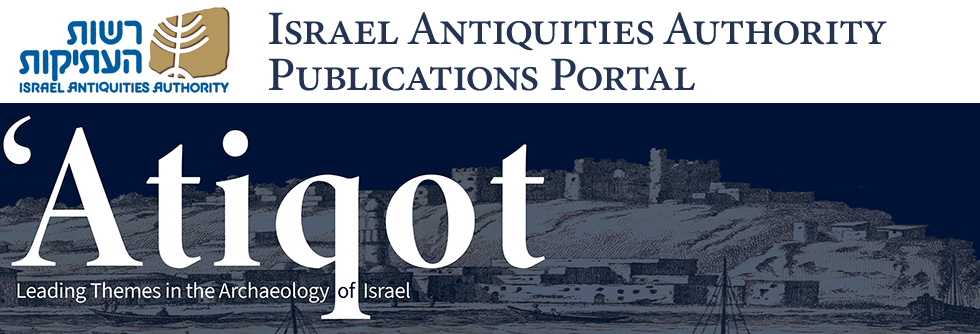Abstract
A salvage excavation in Nein revealed architectural remains of four strata: a late Hellenistic-period (first century BCE) building; a luxurious Early Roman-period residence (late first century BCE to second half of the first century CE); two Mamluk-period ṭabuns; and a late Ottoman-period cesspit and house foundations. The Early Roman-period residence yielded many finds: a rich pottery assemblage, including imported ESA bowls, glass vessels, gold earrings, a bronze bracelet, an iron housekey, a bronze pendant, gems, aucissa fibulae and faience beads. A skeleton of a woman was exposed under a layer of ash and collapsed building stones, accompanied by two gold rings, a pair of gold earrings and a bronze key. The ethnic identity of the house owners could not be clearly determined as similar items have been found elsewhere in both Jewish and pagan contexts.
Keywords
Jezreel Valley, numismatics, Hasmonean, Iron Age II, First Jewish Revolt, Josephus Flavius
Recommended Citation
Abu-Zidan, Fadi; Alexandre, Yardenna; and Syon, Danny
(2022)
"An Early Roman-Period Residence at Nein and Episodes of the First Jewish Revolt in the Jezreel Valley (with a contribution by Gabriela Bijovsky) (Hebrew, pp. 1*–26*; English summary, pp. 271–272),"
'Atiqot: Vol. 107, Article 6.
DOI: https://doi.org/10.70967/2948-040X.1843
Available at:
https://publications.iaa.org.il/atiqot/vol107/iss1/6
Included in
Agriculture Commons, Biblical Studies Commons, History of Art, Architecture, and Archaeology Commons

